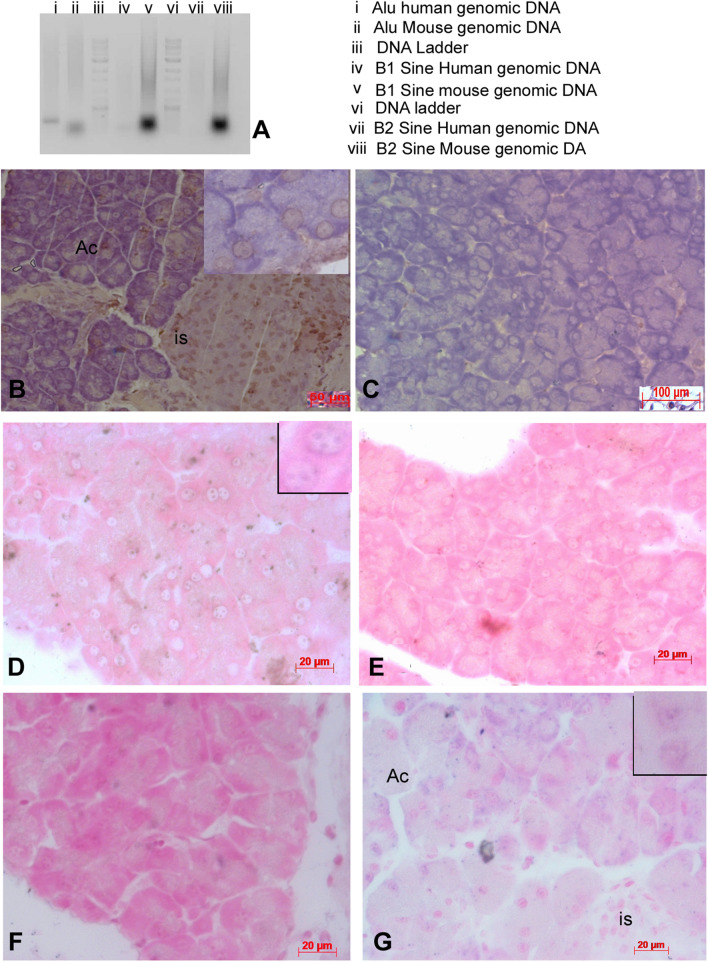Fig. 6.
Cell tracking of human cells. Decellularized pancreas recellularized with human placental MSC and implanted in diabetic mice show recovery of normal histology and tendency to achieve blood glucose reduction. A PCR products amplified using Alu primers and B1/B2 Sine primers. Genomic DNA from mouse and human were used as template. Section of the pancreas recovered after 40 days were stained with HNA antigen and also by in situ hybridization using Alu (Human) and sine (Mouse) repeat sequences to show presence of human cells. B Recellularized pancreas with human cells grafted in mouse for 40 days stained for human nuclear antigen (HNA) show the presence of human cells differentiated into islets and acinar cells. C The pancreas recellularized with mouse adipose MSC does not show HNA staining. D and E sections of pancreas recellularized with human cells hybridized/stained with human Alu probe {inset showing nuclear staining of Alu probes} (D) and Mouse b1 and B2 sine probes (E). F and G pancreas recellularized with mouse adipose cells stained with Human Alu probes (F) and B1& B2 mouse sine probes {inset showing nuclear staining of mouse Sine repeats probes}. Human specific Alu repeats could only be localized in human cells and there was no cross reaction

